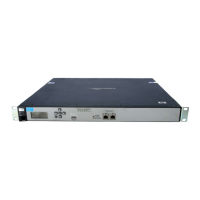LLDP
Overview
17-3
Power over Ethernet (PoE) status and troubleshooting support via SNMP.
Support for IP telephony network troubleshooting of call quality issues via SNMP.
LLDP-MED endpoint devices are located at the network edge and communicate using the
LLDP-MED framework. Any LLDP-MED endpoint device belongs to one of the following
three classes:
Class 1 (Generic Endpoint Devices): These devices offer the basic LLDP discovery
services, network policy advertisement (VLAN ID, Layer 2/802.1p priority, and Layer 3/
DSCP priority), and PoE management. This class includes such devices as IP call
controllers and communication-related servers.
Class 2 (Media Endpoint Devices): These devices offer all Class 1 features plus media
streaming capability, and include such devices as voice/media gateways, conference
bridges, and media servers.
Class 3 (Communication Devices): These devices are typically IP phones or end-user
devices that otherwise support IP media and offer all Class 1 and Class 2 features, plus
location identification and emergency 911 capability, Layer 2 switch support, and device
information management.
Local mesh
LLDP is not supported over local mesh links when running in controlled mode.
In autonomous mode, each AP only sees the APs with which it has a local mesh link as
neighbors.
SNMP support
Support is provided for the following Physical Topology MIB (RFC 2922).
Note When operating in controlled mode the LLDP agents on controlled APs cannot be queried via
SNMP. Instead, all LLDP information from the APs is stored in the controller’s MIBs.

